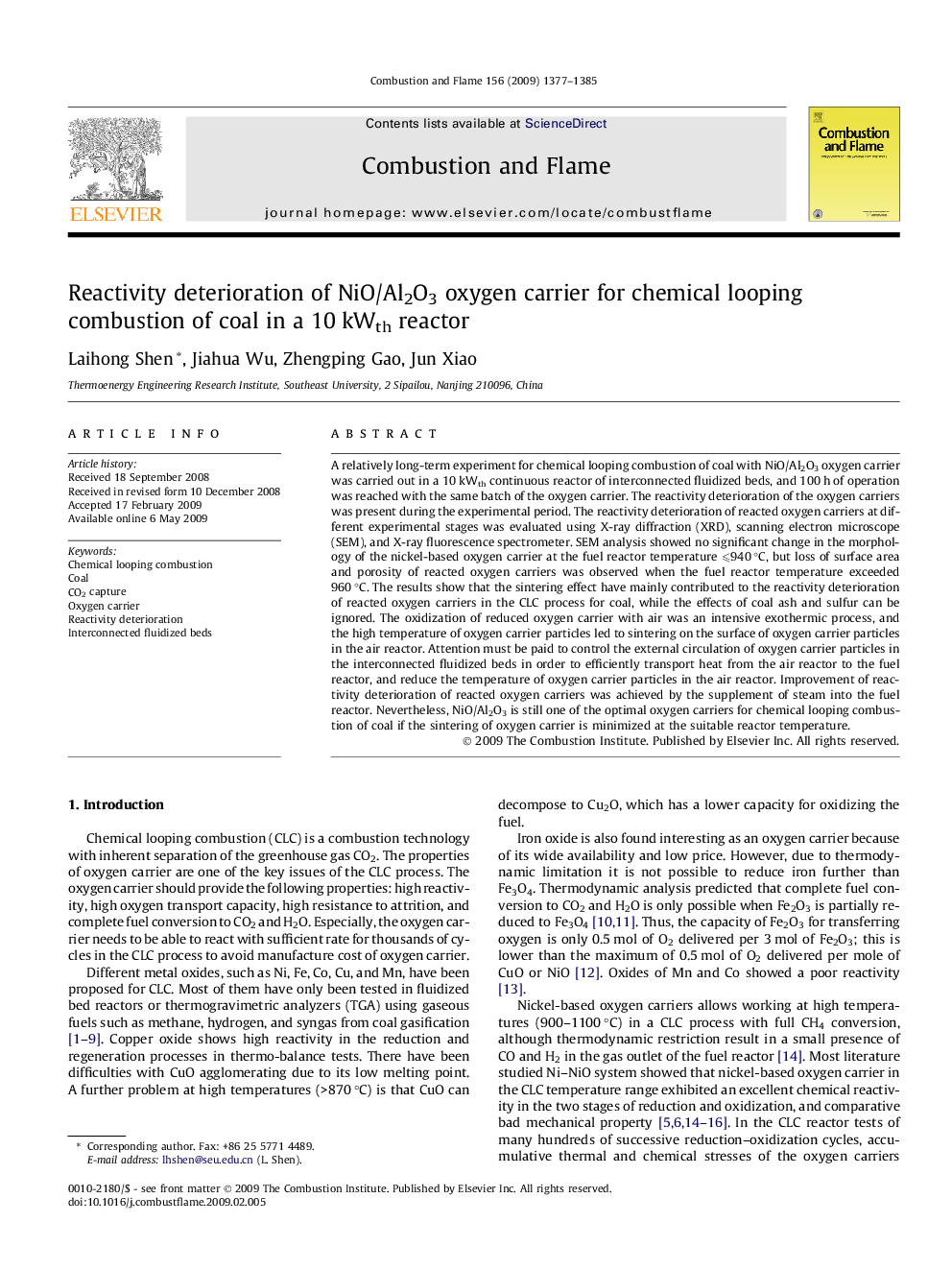| Article ID | Journal | Published Year | Pages | File Type |
|---|---|---|---|---|
| 166918 | Combustion and Flame | 2009 | 9 Pages |
A relatively long-term experiment for chemical looping combustion of coal with NiO/Al2O3 oxygen carrier was carried out in a 10 kWth continuous reactor of interconnected fluidized beds, and 100 h of operation was reached with the same batch of the oxygen carrier. The reactivity deterioration of the oxygen carriers was present during the experimental period. The reactivity deterioration of reacted oxygen carriers at different experimental stages was evaluated using X-ray diffraction (XRD), scanning electron microscope (SEM), and X-ray fluorescence spectrometer. SEM analysis showed no significant change in the morphology of the nickel-based oxygen carrier at the fuel reactor temperature ⩽940 °C, but loss of surface area and porosity of reacted oxygen carriers was observed when the fuel reactor temperature exceeded 960 °C. The results show that the sintering effect have mainly contributed to the reactivity deterioration of reacted oxygen carriers in the CLC process for coal, while the effects of coal ash and sulfur can be ignored. The oxidization of reduced oxygen carrier with air was an intensive exothermic process, and the high temperature of oxygen carrier particles led to sintering on the surface of oxygen carrier particles in the air reactor. Attention must be paid to control the external circulation of oxygen carrier particles in the interconnected fluidized beds in order to efficiently transport heat from the air reactor to the fuel reactor, and reduce the temperature of oxygen carrier particles in the air reactor. Improvement of reactivity deterioration of reacted oxygen carriers was achieved by the supplement of steam into the fuel reactor. Nevertheless, NiO/Al2O3 is still one of the optimal oxygen carriers for chemical looping combustion of coal if the sintering of oxygen carrier is minimized at the suitable reactor temperature.
